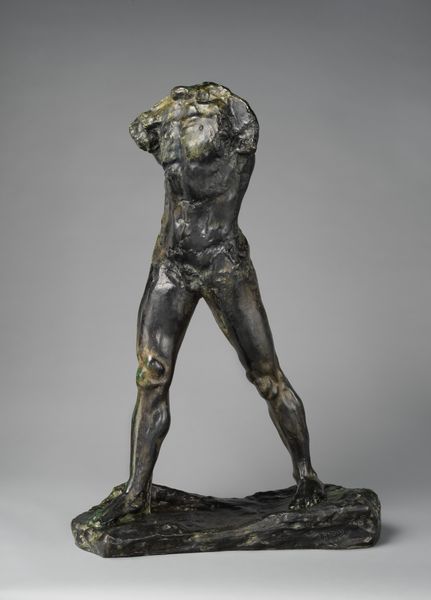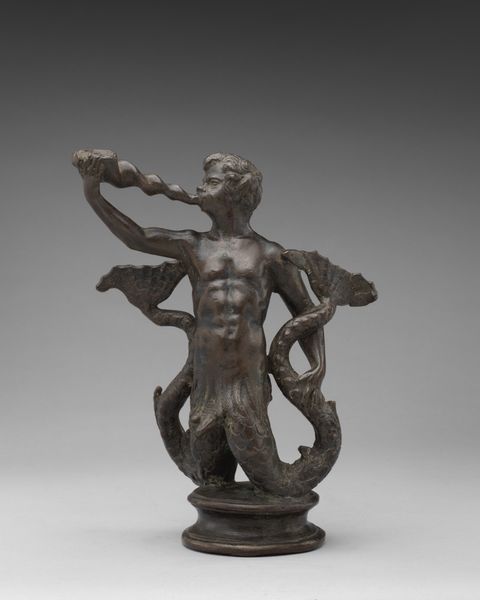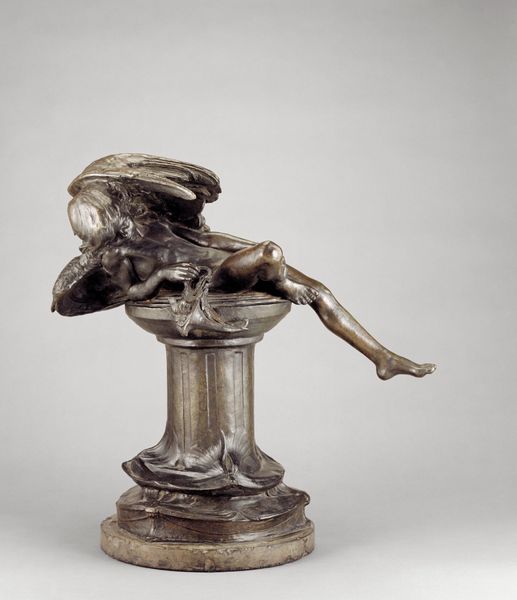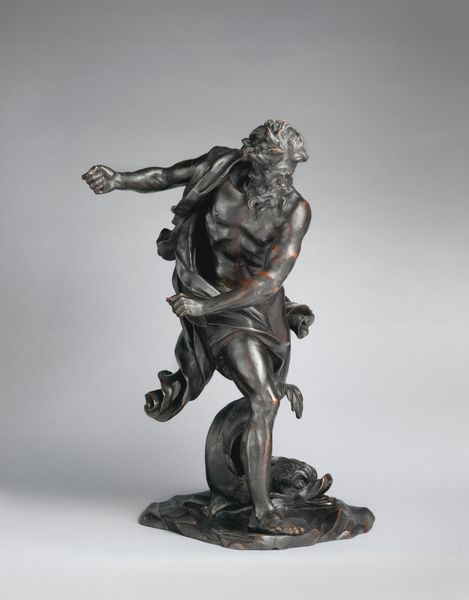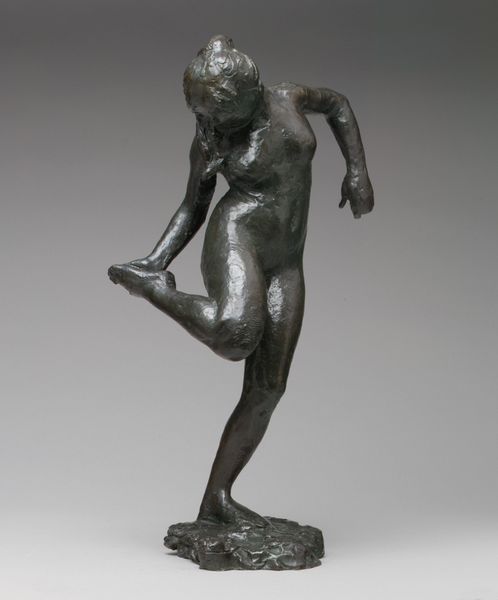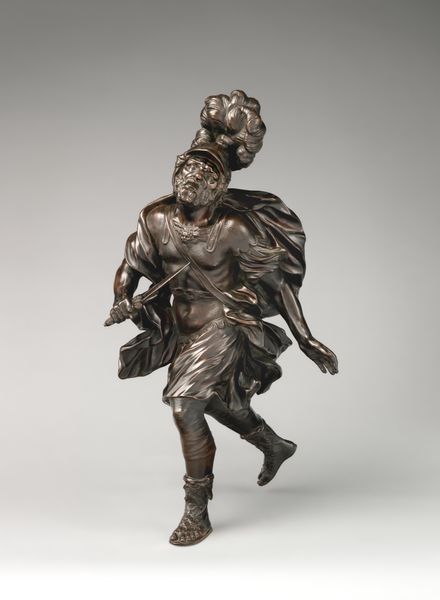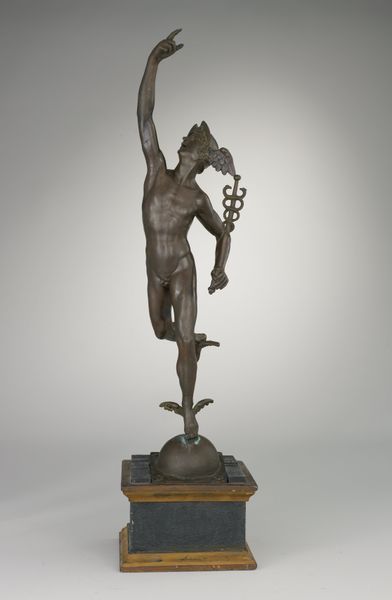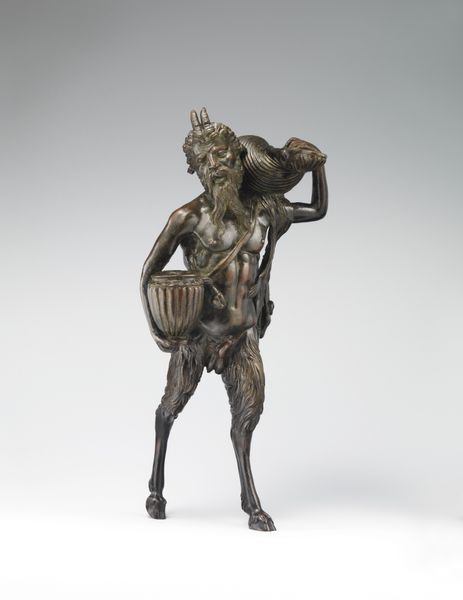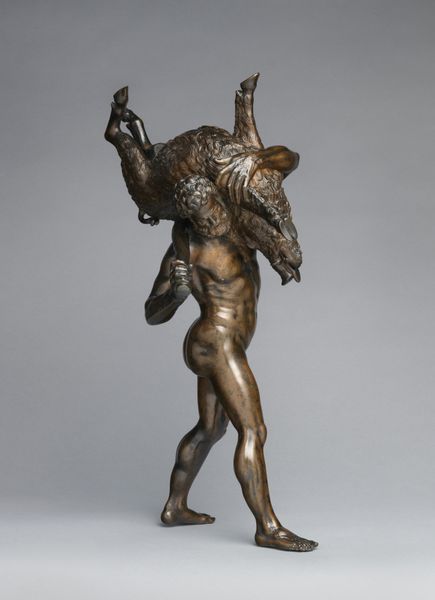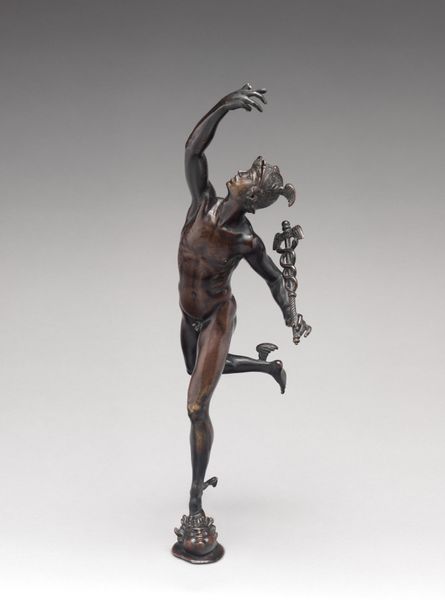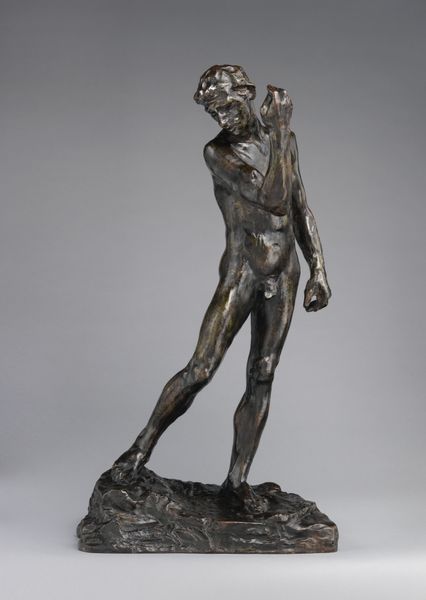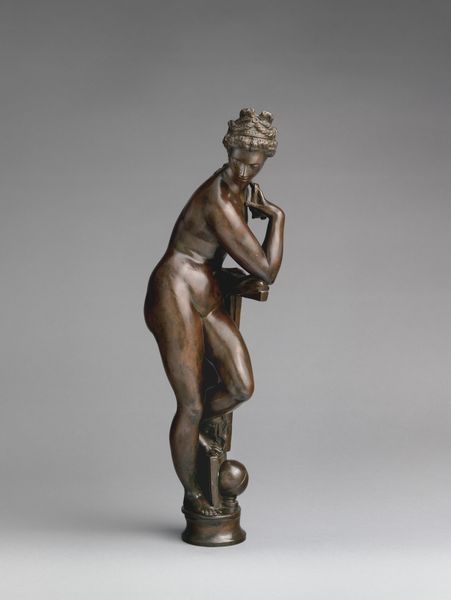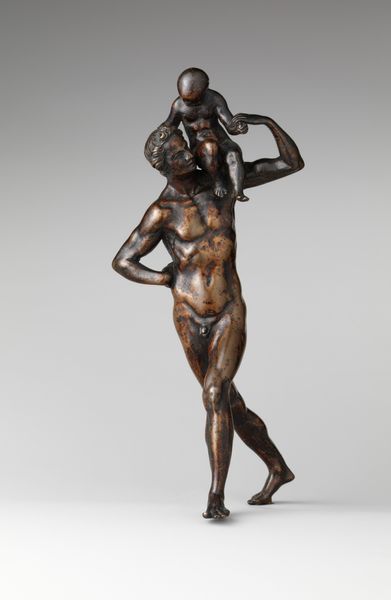
Hercules or Atlas Supporting the Globe 1775 - 1785
0:00
0:00
bronze, sculpture
#
neoclacissism
#
sculpture
#
bronze
#
figuration
#
sculpture
#
history-painting
#
decorative-art
Dimensions: Height: 15 5/8 in. (39.7 cm)
Copyright: Public Domain
Editor: This is Clodion's bronze sculpture "Hercules or Atlas Supporting the Globe," dating from 1775 to 1785. The figure looks incredibly strained under the weight of the world; it’s both powerful and poignant. How do you interpret this work, particularly in its historical context? Curator: The sculpture reflects the Neoclassical interest in antiquity, specifically the myths of Atlas and Hercules, repackaged in late 18th-century France, when ideas about individual responsibility were being debated heatedly, but also about empire. Who holds power, who carries the burden? Consider the visual rhetoric – the emphasis on musculature suggesting strength, but also strain. Where do you think the artist's sympathies lie? Editor: That’s fascinating. I assumed it was a celebration of strength, but seeing it as a commentary on power dynamics makes a lot of sense, especially considering the political climate. Does the choice of bronze as the medium have significance in that regard? Curator: Absolutely. Bronze, with its historical associations to grand, enduring monuments, elevates the subject beyond mere representation to embody a timeless, almost allegorical message, meant to circulate within a specific segment of society that visits museums. Think about who might have seen it, and what messages it might have sent regarding revolution and social order. What statement is Clodion making by linking revolution with the weight of history? Editor: I see. The weight of history is literal and metaphorical. So, it's not just a mythological figure, but a loaded commentary. Thank you for offering this different understanding; I now realize how deeply embedded these works are in the politics of their time. Curator: Precisely. Considering the socio-political background illuminates what could have remained an admiration of an aesthetic representation of classical antiquity and its visual impact, but we see it transformed to something more substantive and relevant today.
Comments
No comments
Be the first to comment and join the conversation on the ultimate creative platform.
